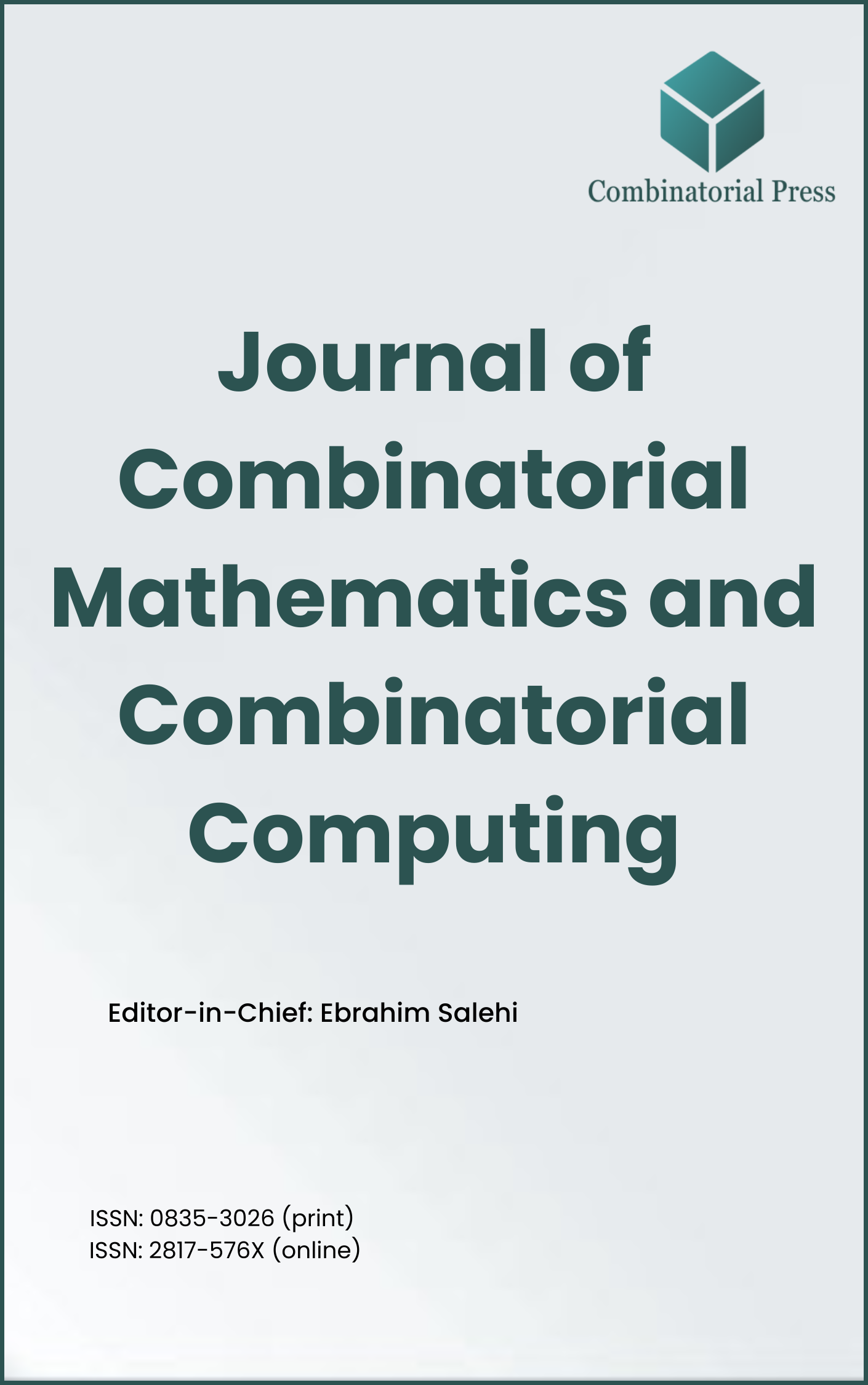
Journal of Combinatorial Mathematics and Combinatorial Computing
ISSN: 0835-3026 (print) 2817-576X (online)
The Journal of Combinatorial Mathematics and Combinatorial Computing (JCMCC) embarked on its publishing journey in April 1987. From 2024 onward, it publishes four volumes per year in March, June, September and December. JCMCC has gained recognition and visibility in the academic community and is indexed in renowned databases such as MathSciNet, Zentralblatt, Engineering Village and Scopus. The scope of the journal includes; Combinatorial Mathematics, Combinatorial Computing, Artificial Intelligence and applications of Artificial Intelligence in various files.
- Research article
- Full Text
- Journal of Combinatorial Mathematics and Combinatorial Computing
- Volume 015
- Pages: 241-254
- Published: 30/04/1994
We survey here results and problems from the reconstruction theory of evolutionary trees, which involve enumeration and inversion.
- Research article
- Full Text
- Journal of Combinatorial Mathematics and Combinatorial Computing
- Volume 015
- Pages: 229-239
- Published: 30/04/1994
It is proved in this paper that for any integer
- Research article
- Full Text
- Journal of Combinatorial Mathematics and Combinatorial Computing
- Volume 015
- Pages: 227-228
- Published: 30/04/1994
In this note, we construct a
- Research article
- Full Text
- Journal of Combinatorial Mathematics and Combinatorial Computing
- Volume 015
- Pages: 221-226
- Published: 30/04/1994
In this paper, we prove the NP-hardness of the bottleneck graph bipartition problem and study the complexity status of possible approximation algorithms for some related problems.
- Research article
- Full Text
- Journal of Combinatorial Mathematics and Combinatorial Computing
- Volume 015
- Pages: 197-219
- Published: 30/04/1994
This paper concerns neighbour designs in which the elements of each block are arranged on the circumference of a circle. Most of the designs considered comprise a general class of balanced Ouchterlony neighbour designs, which include the balanced circuit designs of Rosa and Huang
- Research article
- Full Text
- Journal of Combinatorial Mathematics and Combinatorial Computing
- Volume 015
- Pages: 181-196
- Published: 30/04/1994
A dependence system on a set
- Research article
- Full Text
- Journal of Combinatorial Mathematics and Combinatorial Computing
- Volume 015
- Pages: 171-180
- Published: 30/04/1994
Let
- Research article
- Full Text
- Journal of Combinatorial Mathematics and Combinatorial Computing
- Volume 015
- Pages: 161-169
- Published: 30/04/1994
We introduce a complex version of Golay sequences and show how these may be applied to obtain new Hadamard matrices and complex Hadamard matrices. We also show how to modify the Goethals-Seidel array so that it can be used with complex sequences.
- Research article
- Full Text
- Journal of Combinatorial Mathematics and Combinatorial Computing
- Volume 015
- Pages: 155-160
- Published: 30/04/1994
In this paper, we improve the best known algorithm on symmetric equivalence of Hadamard matrices by considering the eigenvalues of symmetric Hadamard matrices. As a byproduct, the eigenvalues of skew Hadamard matrices are also discussed.
- Research article
- Full Text
- Journal of Combinatorial Mathematics and Combinatorial Computing
- Volume 015
- Pages: 141-154
- Published: 30/04/1994
The spectrum for





